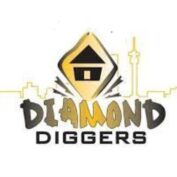Back to: Gemology Tools
Gemology, the study of gemstones and precious minerals, requires specialized tools to accurately examine, analyze, and evaluate these treasures of the Earth. These tools serve several important purposes:
- Identification: Gemological tools help identify and differentiate gemstones based on their physical properties, such as color, transparency, refractive index, and hardness. Through the use of tools like a refractometer, spectroscope, and loupe, gemologists can determine a stone’s identity, revealing whether it is a diamond, ruby, emerald, or another gem.
- Quality Assessment: Gemological tools play a crucial role in assessing the quality and value of gemstones. By using tools like a microscope or magnifying loupe, gemologists can inspect a gem’s clarity, look for inclusions and blemishes, and evaluate its overall appearance. This information helps determine whether a gem is of high or low quality, influencing its market value.
- Grading and Certification: Gemological tools enable gemologists to accurately grade gemstones based on internationally recognized standards. Tools like digital calipers and precision scales help measure and weigh gems precisely, allowing for precise grade determination. Moreover, gemological tools are essential for issuing certificates that provide authenticity and information about a gem’s characteristics, aiding in transparent buying and selling practices.
- Research and Analysis: Gemological tools are indispensable for research, ensuring a comprehensive understanding of gemstone properties. Advanced tools like infrared spectrometers and ultraviolet lamps help reveal unique characteristics and valuable insights into a gem’s origin, treatments, and potential enhancements. These tools aid gemologists in identifying synthetics or detecting treatments that may affect a gem’s value.
- Preservation and Care: Gemological tools assist in the proper preservation and care of gemstones. Tools like ultrasonic cleaners, gauges, and polishers aid in cleaning, measuring, and enhancing the appearance of gems. By understanding how these tools can be safely used, gemstone owners can maintain the beauty and longevity of their precious treasures.
In conclusion, gemological tools are essential for accurate identification, quality assessment, grading, research, and care of gemstones. They facilitate gemological studies, ensure transparency in the gem trade, and help preserve the beauty and value of these natural wonders.
As the modern gem trade has become increasingly complex due to the rise of geographic origin determination and the proliferation of laboratory-grown gems and new treatments, advanced instruments are more crucial than ever to helping gemologists properly identify their gems. Methods such as laser ablation inductively coupled plasma mass spectrometry can detect trace elements with concentrations of less than 1 out of every million atoms. Along with advanced spectroscopic techniques, these tools help researchers tell laboratory-grown from natural gems but can also provide a “fingerprint” that helps researchers trace gems back to the location where they were mined. Follow the senior manager of research, Dr. Aaron Palke, on a behind-the-scenes tour of the tools used in a modern gemological laboratory, seeing with new eyes how scientists employ advanced analytical equipment to identify and characterize the gemstones that pass through GIA.
